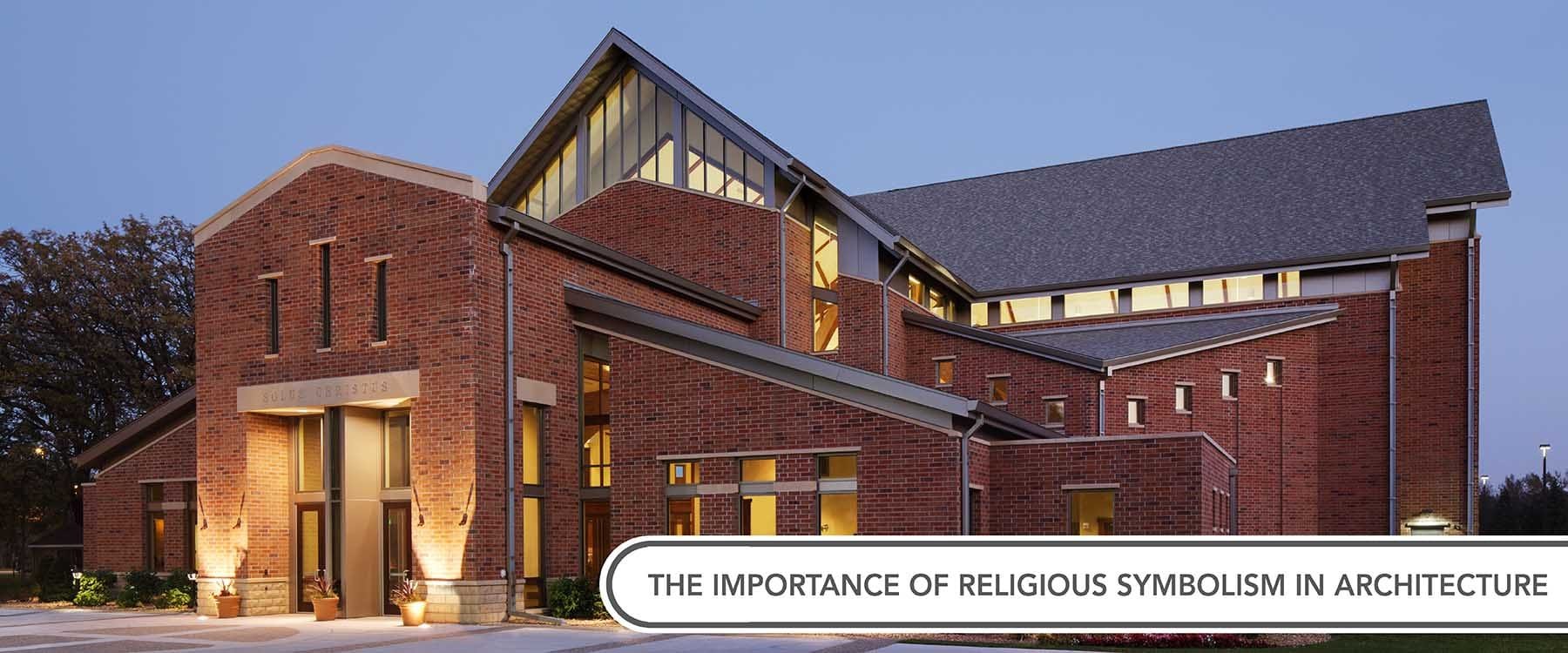Case Study: Martin Luther College – Chapel of the Christ
Buildings that connect the human experience to faith are special places. Accomplished ‘architecture’ works on many levels of perception to offer a richer experience to the occupant. Religious architecture offers a unique opportunity to inspire, lift spirits, and subtly teach the faithful and those still seeking faith.
Who Does Religious Symbolism Affect?
Architecture that integrates references to faith is an art. It takes effort. We do it because it matters:
- Worshipers and Congregants: Religious references embedded in church architecture enhance the spiritual experience of the faithful. Symbolic elements such as crosses, altars, stained-glass windows, and even the configuration of the sanctuary can convey religious meaning and may inspire devotion or create a sacred atmosphere that facilitates prayer and contemplation. This core group is the real beneficiary of our efforts.
- Religious Leaders: Religious symbolism plays a large role in the work of religious leaders. They interpret symbolism every day and use it in their lessons, rituals, and ceremonies to convey a message, inspire devotion, and create community. Many are influenced and energized by the appropriate use of religious references throughout their church building.
- Church Visitors: Visitors to your church may admire the architectural features, decipher the symbolism, and gain insights into the religious traditions and beliefs associated with your particular church. Each visit provides a renewed view and deeper understanding. They may decide to come again. And perhaps become a member.
- Artists and Craftsmen: Artists and craftsmen involved in church architecture contribute to the creation of architectural symbolism. They create intricate artworks, sculptures, and stained-glass windows that depict religious narratives, saints, and symbols. They may also create furniture or other architectural adornments to the building that help convey meaning. This work provides the visual and symbolic language of the church. These good people face limited job opportunities. The number of available artisans is dwindling for lack of work. Providing opportunities for expression of their talent, and their faith, does us all good.
The Religious Symbolism at Martin Luther College
PRA was hired to design the Chapel of the Christ on the Martin Luther College campus. This chapel serves as a case study about how to embody the Christian Faith into architecture in a deeply moving way: Expressed in three dimensions as a soaring cross within an octagonal form, the design of Martin Luther College’s Chapel of the Christ is a profoundly symbolic example of modern architecture rich with sacred expression. Learn how the PRA church designers integrated symbolism into the Chapel and the major considerations that influenced design decisions, below.
